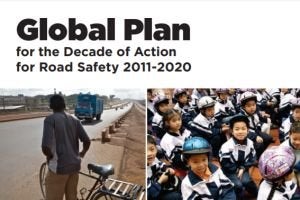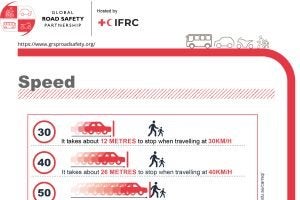
Overview
CAREC Road Safety Engineering Manual 3: Roadside Hazard Management ⌵︎
The Central Asia Regional Economic Cooperation (CAREC) countries committed to road safety at the 14th CAREC Ministerial Conference in Mongolia in September 2015. More recently, the CAREC Road Safety Strategy 2017–2030 during the 15th Ministerial Conference in Pakistan in October 2016. The strategy supports and encourages governments and road authorities to plan, design, construct, and maintain roads with road safety as a key and specific objective.
One important, but often forgotten, part of a highway is the roadside. Single-vehicle “run-off-road” crashes are a significant part of most national crash statistics. They are particularly severe, and can occur anywhere and at any time. The severity of these crashes is directly related to the nature of the roadside. It is the responsibility of highway engineers to provide “forgiving” roadsides that can safely accommodate drivers when they make a mistake. Highway agencies across the CAREC region acknowledge this problem, and are keen to build up expertise in this field.
This manual serves as a practical point of reference for roadside hazard management in CAREC countries. The principles contained in this manual are suggested to be adopted in all CAREC road projects. This manual was written to expand the understanding of, and to assist the implementation of, safer roadsides on CAREC roads. This information is essential for highway engineers, planners, designers, audit team members, project managers, and representatives of the client and/or project team. The main topics include:
• identification of roadside hazards;
• investigation of roadside hazards (the roadside hazard management strategy);
• the clear zone concept;
• the three groups of safety barriers; and
• safe treatments for roadside hazards on CAREC highways.
The most important message in this manual concerns the roadside hazard management strategy. Readers are encouraged to embrace the strategy; this manual details the key steps in it and explains how each step can help to improve roadside safety:
• Avoid locating hazardous objects within the clear zone (remove any existing objects).
• Relocate hazards beyond the clear zone to minimize the probability they will be struck by an errant vehicle.
• Redesign (or modify) hazards to reduce their danger. Use devices such as breakaway sign posts to reduce the severity of an impact.
• Shield hazardous objects that cannot be treated in any other way with safety barrier.
• Delineate the hazard and take steps to “keep vehicles on the road.”
This manual was prepared under a technical assistance grant for Enhancing Road Safety for CAREC Countries (TA 8804-REG) from the Asian Development Bank (ADB). The production of this manual was administered and managed by the CAREC Secretariat at ADB. The Secretariat team includes Ko Sakamoto, Oleg Samukhin, Ian Hughes, Charles Melhuish, Pilar Sahilan, and Debbie Gundaya. The principal author of this manual is Phillip Jordan.
Global Resources Details
CAREC Road Safety Engineering Manual 3: Roadside Hazard Management
Did you know?
82% of Road Crash Fatalities and Injuries in the economically productive age groups (15 - 64 years.)
82% of Road Crash Fatalities and Injuries in the economically productive age groups (15 - 64 years.)


